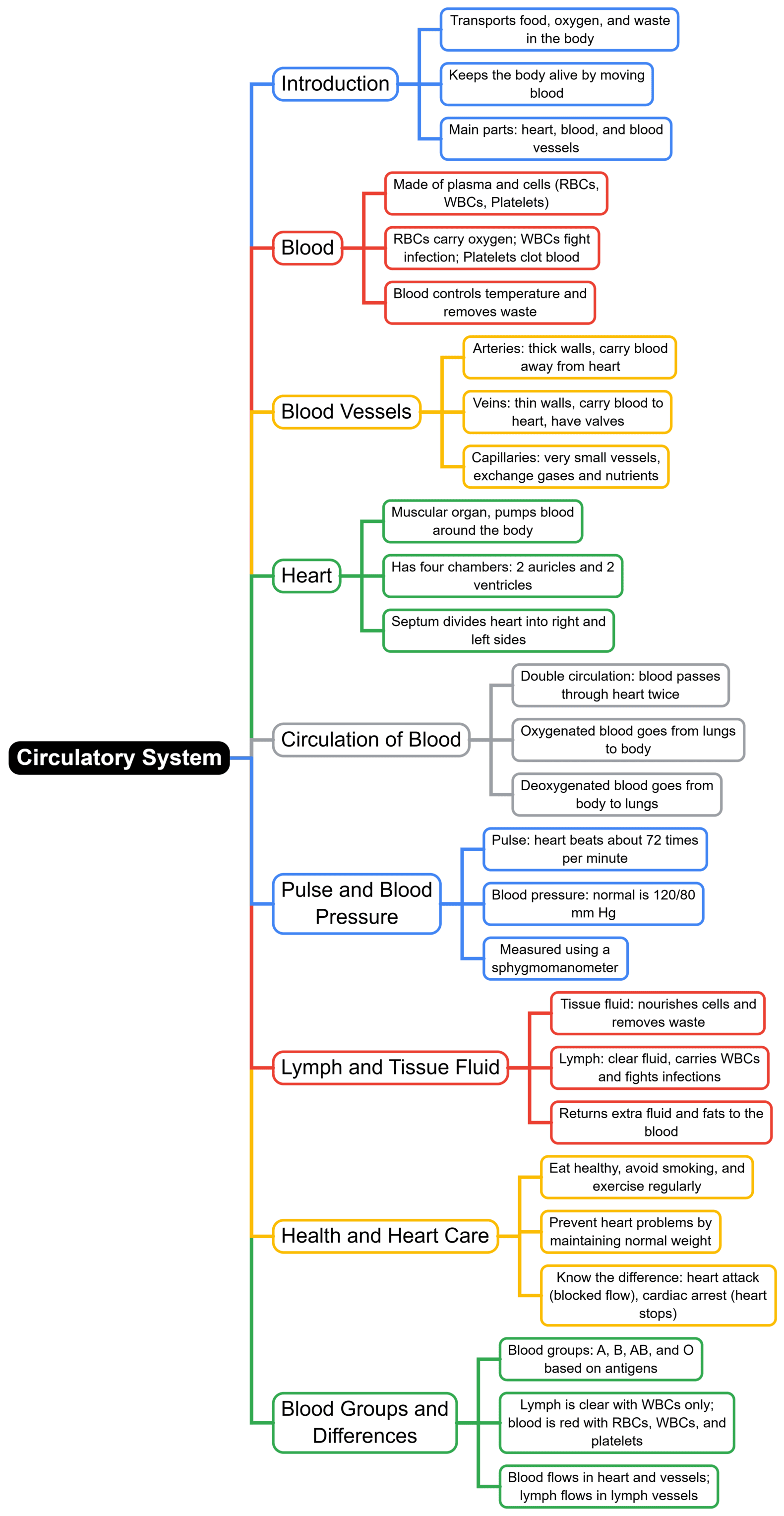SSS 2 Exam > SSS 2 Notes > Biology for SSS 2 > Mind Map: Circulatory System
Mind Map: Circulatory System | Biology for SSS 2 PDF Download

The document Mind Map: Circulatory System | Biology for SSS 2 is a part of the SSS 2 Course Biology for SSS 2.
All you need of SSS 2 at this link: SSS 2
|
76 docs|10 tests
|
FAQs on Mind Map: Circulatory System - Biology for SSS 2
| 1. What are the main components of the circulatory system? |  |
Ans. The circulatory system consists of the heart, blood vessels, and blood. The heart functions as a pump to circulate blood throughout the body. Blood vessels include arteries, veins, and capillaries, which transport blood to and from various tissues. Blood carries oxygen, nutrients, hormones, and waste products, playing a crucial role in maintaining homeostasis.
| 2. How does the circulatory system interact with other body systems? |  |
Ans. The circulatory system interacts closely with the respiratory system to exchange gases. Oxygen is taken up in the lungs and transported to cells, while carbon dioxide is carried back to the lungs for exhalation. It also works with the digestive system to distribute nutrients absorbed from food. Furthermore, the circulatory system aids the immune system by transporting white blood cells and antibodies throughout the body.
| 3. What is the difference between systemic and pulmonary circulation? |  |
Ans. Systemic circulation refers to the pathway in which oxygen-rich blood is pumped from the left side of the heart to the rest of the body, delivering oxygen and nutrients to tissues. Conversely, pulmonary circulation is the route in which deoxygenated blood is sent from the right side of the heart to the lungs, where it receives oxygen and releases carbon dioxide before returning to the heart.
| 4. What are common diseases associated with the circulatory system? |  |
Ans. Common diseases of the circulatory system include hypertension (high blood pressure), coronary artery disease, heart attacks, and strokes. Conditions such as atherosclerosis, where arteries become narrowed due to plaque buildup, can lead to these diseases. Lifestyle factors such as poor diet, lack of exercise, and smoking can increase the risk of developing these conditions.
| 5. How can individuals maintain a healthy circulatory system? |  |
Ans. Maintaining a healthy circulatory system involves adopting a balanced diet rich in fruits, vegetables, whole grains, and lean proteins while limiting saturated fats, sugars, and salt. Regular physical activity, maintaining a healthy weight, avoiding tobacco use, and managing stress are also vital. Regular check-ups with healthcare professionals can help monitor blood pressure and cholesterol levels, further supporting cardiovascular health.
Related Searches




















